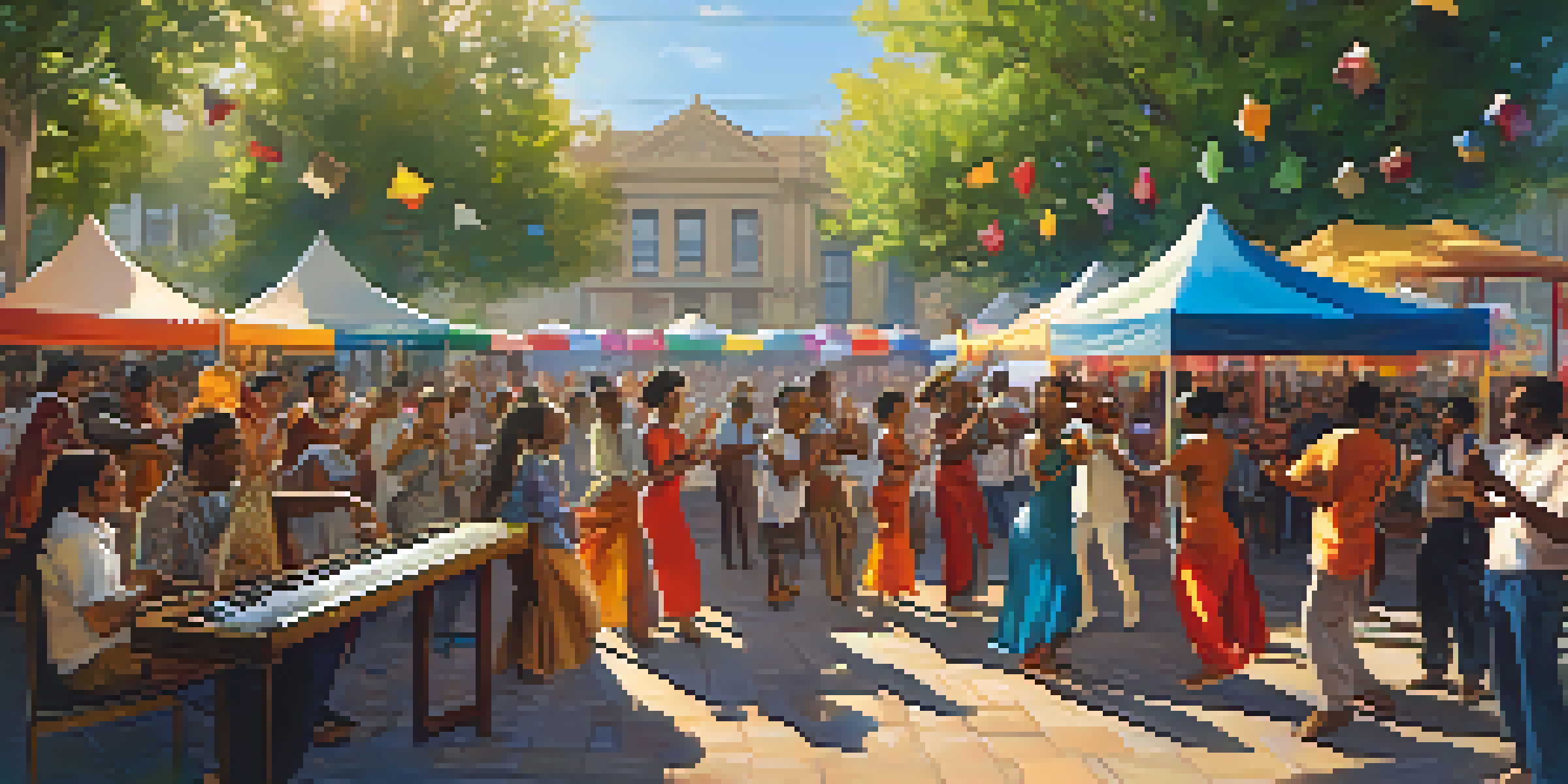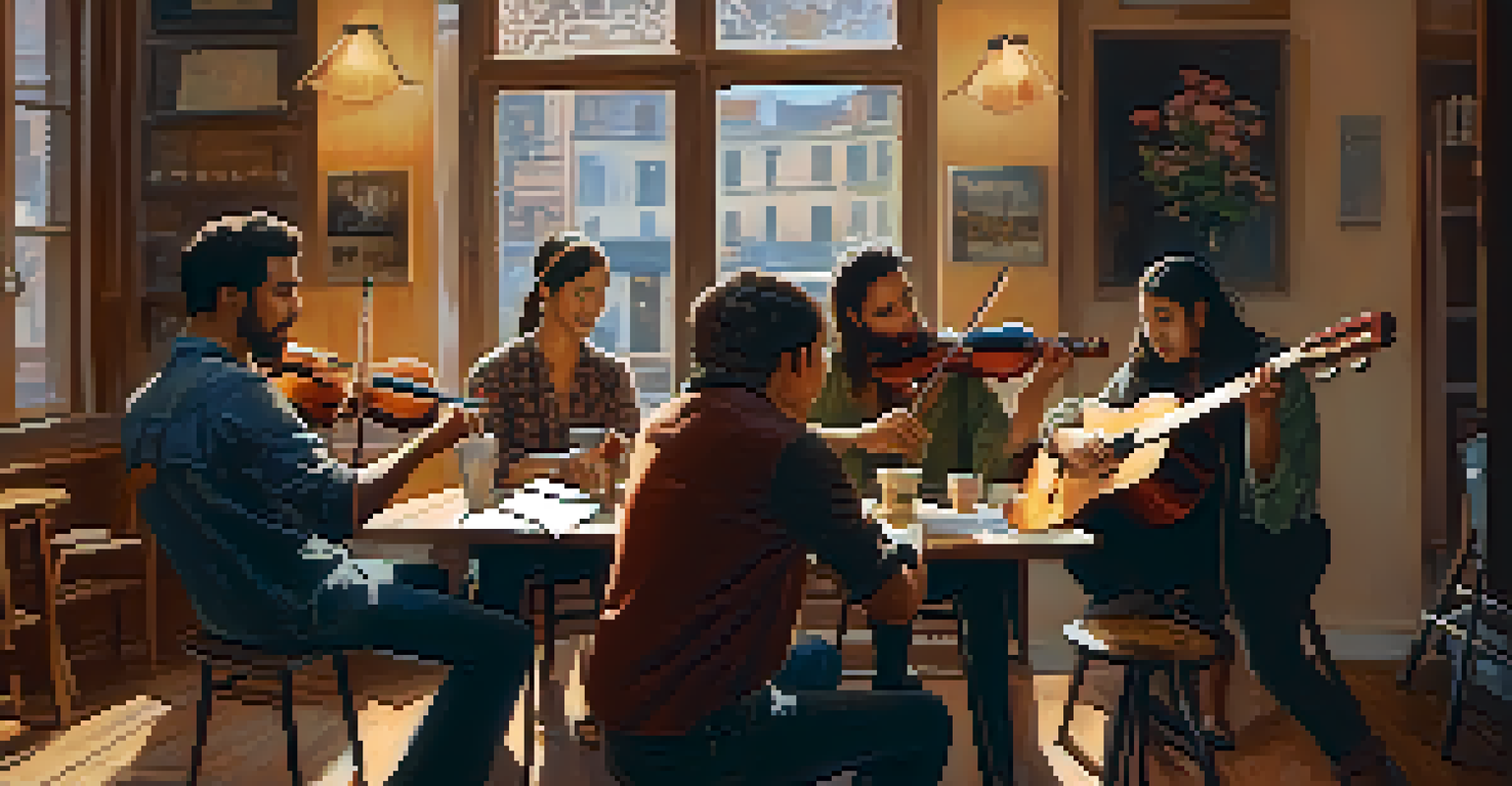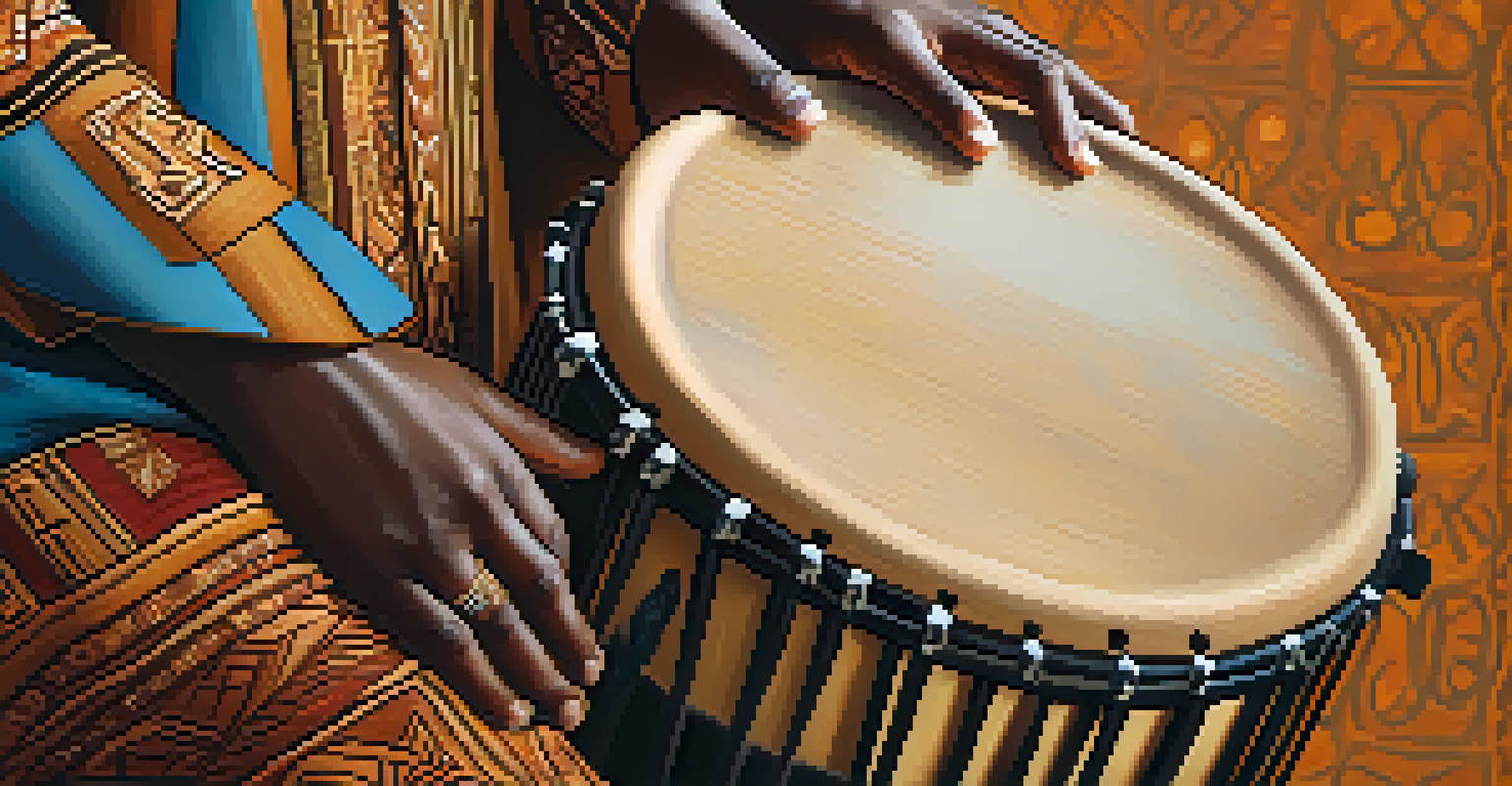How Migration Shapes Music: A Study of Cultural Exchanges

Understanding Migration and Cultural Exchange
Migration has always been a part of human history, shaping societies and cultures in profound ways. When people move from one place to another, they bring their traditions, beliefs, and, importantly, their music. This exchange often results in a vibrant fusion of sounds, rhythms, and instruments, creating new genres that reflect the blended cultures.
Music is the universal language of mankind.
For instance, the migration of African peoples to the Americas gave rise to genres like jazz and blues, where African rhythms mixed with European musical forms. Similarly, the movement of immigrants into the United States led to a rich tapestry of musical styles, from country to rock and roll. These examples illustrate how migration creates a dynamic dialogue between different musical heritages.
Understanding this relationship helps us appreciate the depth and diversity of music today. It shows us that music is not just entertainment; it's a living history, telling the stories of those who created it and the journeys they undertook.
The Role of Music in Identity Formation
Music plays a crucial role in how individuals and communities express their identities, especially in the context of migration. For many migrants, music is a way to maintain a connection to their homeland, serving as a reminder of their roots amidst new surroundings. Traditional songs often carry the emotions and experiences of a community, providing comfort and continuity in a foreign land.

Take, for example, the Mexican migratory experience in the United States, where mariachi and corrido music have become symbols of cultural pride and resilience. These musical forms not only celebrate heritage but also address the struggles and triumphs faced by the community. In this way, music becomes a powerful tool for identity preservation, allowing migrants to honor their past while navigating their present.
Migration Shapes Musical Fusion
The movement of people leads to a vibrant blend of musical traditions, creating new genres that reflect diverse cultural heritages.
Moreover, as migrants share their music with others, they facilitate a broader understanding of their culture. This sharing often leads to a rich musical exchange, where different communities learn from and influence each other, further shaping collective identities.
Case Study: The Influence of African Music
The impact of African music on global music scenes is a prime example of how migration shapes musical landscapes. With the transatlantic slave trade, African rhythms and musical traditions found their way into the Americas, profoundly influencing genres like jazz, blues, and reggae. These genres not only reflect African heritage but also embody the struggles and stories of those who endured displacement.
Without music, life would be a mistake.
The syncopated rhythms and call-and-response patterns characteristic of African music became foundational elements in many American musical styles. This cultural exchange showcases how migration led to the creation of entirely new genres, which in turn influenced countless artists and movements around the world. African musicians today continue to innovate, blending traditional sounds with contemporary influences, thus keeping their cultural heritage alive.
This ongoing evolution illustrates that music is a living entity, constantly reshaped by the experiences of its creators. The fusion of African music with other styles serves as a reminder of the resilience and adaptability of cultural expressions in the face of migration.
The Impact of European Migration on Folk Music
European migration has also left a significant mark on folk music across the globe. As people from different European countries migrated, they brought their traditional music with them, which often blended with local sounds. This fusion gave rise to new folk traditions that reflect the diverse influences of various cultures.
For example, Irish immigrants in the United States contributed to the development of American folk music, particularly through instruments like the fiddle and the tin whistle. Songs like 'Oh Danny Boy' and 'The Wild Rover' became staples of both Irish and American folk music, showcasing how migration can create a shared musical heritage. These traditions often evolve over generations, incorporating elements from other cultures and giving rise to new interpretations.
Music Preserves Cultural Identity
For many migrants, music serves as a vital link to their roots, allowing them to express their identity and share their stories in new environments.
Such cross-cultural exchanges highlight the adaptability of music, showcasing how it can evolve while retaining its original essence. This ongoing blending of styles and traditions enriches the musical landscape, proving that migration is not just a one-way street; it's a dynamic process that fuels creativity.
The Globalization of Music Through Migration
In today's interconnected world, migration has accelerated the globalization of music. With the rise of technology and social media, artists can now easily share their music across borders, leading to a blending of genres on a scale never seen before. This phenomenon allows for a more extensive cultural exchange, where influences from various musical traditions can be heard in mainstream music.
For instance, K-pop has taken the global stage, drawing influences from diverse genres like hip-hop, R&B, and electronic dance music. This fusion reflects not only the cultural backgrounds of the artists but also the global audience they aim to reach. Similarly, artists like Bad Bunny have popularized reggaeton, merging Latin rhythms with other global sounds, further highlighting the impact of migration on music.
As artists continue to collaborate across borders, the lines between genres blur, creating fresh sounds that resonate with a diverse audience. This evolution emphasizes that music, much like migration itself, transcends boundaries, uniting people through shared experiences and emotions.
The Role of Technology in Musical Migration
Technology has played a pivotal role in facilitating musical migration, making it easier for artists to connect and share their work globally. Streaming platforms, social media, and digital collaboration tools have transformed how music is produced and consumed. No longer confined by geographical barriers, musicians can collaborate with others from different cultures, leading to innovative musical fusions.
For example, the use of online platforms allows artists from different backgrounds to create music together, regardless of their physical locations. This has led to the emergence of genres like EDM (Electronic Dance Music), where influences from various cultures blend to create a unique sound that resonates worldwide. The accessibility of technology empowers artists to experiment and push the boundaries of traditional music.
Technology Boosts Global Music Exchange
Advancements in technology have facilitated global collaboration among artists, enhancing the exchange of musical styles and creating innovative fusions.
Moreover, technology enables audiences to discover and appreciate music from around the world, fostering a greater understanding of diverse cultural expressions. This interconnectedness enhances the richness of the musical landscape, proving that technology and migration together create a powerful synergy that shapes the way we experience music.
Celebrating Cultural Diversity Through Music
Music serves as a celebration of cultural diversity, showcasing the rich tapestry of human experiences. Festivals, concerts, and community events often feature a mix of musical styles, allowing people from different backgrounds to share their traditions and stories. This sharing fosters a sense of belonging and appreciation for one another's cultures, highlighting the role of music as a unifying force.
For instance, events like the Global Citizen Festival bring together artists from various genres and backgrounds to promote social change and cultural understanding. These gatherings not only entertain but also educate audiences about the importance of cultural exchange and the impact of migration on music. They create spaces where diverse musical expressions can thrive, encouraging collaboration and dialogue among artists.

By celebrating cultural diversity through music, we acknowledge the contributions of migration to the global musical landscape. This recognition is essential in fostering a sense of community and appreciation for the unique stories that each musical tradition brings to the table, ultimately enriching our collective human experience.